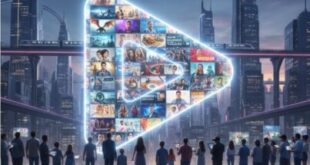For centuries, libraries have stood as temples of knowledge—repositories of history, imagination, and human progress. Their shelves carried not only books but also the quiet weight of collective memory. Today, in a digital era defined by instant access and algorithmic curation, one question grows louder: can digital spaces truly sustain the value libraries have embodied for generations?
Libraries as Cultural Anchors
Traditional libraries are not simply book depositories. They are cultural anchors, places where knowledge is democratized and communities gather. In their silence, people discover voices from the past, and in their collections, societies see a reflection of their own intellectual journey. Libraries carry symbolic weight: they embody permanence, public trust, and the ideal that learning is a shared good rather than a private commodity.
The Promise of Digital Spaces
The digital transformation has brought an extraordinary expansion of access. Online repositories, open-access journals, and digital lending platforms allow a student in a rural village to access the same texts as a researcher in a global capital. Search engines and AI tools accelerate discovery in ways unimaginable a generation ago. Digitization also preserves fragile manuscripts and rare collections that might otherwise succumb to time. From an access perspective, digital spaces appear not only to complement libraries but to fulfill their deepest mission—making knowledge available to all.
Risks of the Digital Shift
Yet, the very strengths of digital spaces reveal their weaknesses. Unlike libraries rooted in public trust, much of digital knowledge is mediated by private platforms. Algorithms prioritize attention over accuracy, and access is vulnerable to shifting paywalls, licensing restrictions, and corporate interests. Digital spaces are also precarious in ways physical libraries are not: a corrupted file, a lapsed subscription, or a server shutdown can erase access instantly. Moreover, the embodied, communal experience of walking into a library—the serendipity of stumbling upon a book, the tactile connection to knowledge—remains irreplaceable.
Sustaining Value Through Hybrid Models
The future of library culture lies not in resisting digital transformation but in shaping it. Many libraries have already embraced hybrid models—digitizing their collections while maintaining physical spaces as centers of community learning. By doing so, they retain their cultural role while expanding reach. Digital archives can preserve and democratize, but libraries as physical places continue to cultivate curiosity, dialogue, and reflection beyond the scroll of a screen.
A Question of Trust and Identity
Ultimately, sustaining the value of libraries in the digital era is a question of trust and identity. Do we see knowledge as a shared heritage or as a product to be consumed? Do we value the slow, deliberate act of exploration, or will we surrender entirely to convenience? The survival of library culture depends on answering these questions consciously. If digital spaces are guided by the principles that libraries have upheld—equity, permanence, and stewardship—they can indeed sustain value. If not, the cultural soul of libraries risks being diminished in the speed and impermanence of the digital tide.
Conclusion
Libraries are more than storage rooms for books; they are civic sanctuaries of meaning. Digital spaces, for all their reach, must aspire to this same ethos. Preserving library culture in the digital era requires not only scanning pages but also sustaining the values embedded in the institution: trust, permanence, and the dignity of shared learning. In a future where bytes may outnumber books, the true measure of success will be whether digital knowledge still feels like a public inheritance—accessible, enduring, and deeply human.
By Vivek Singhal, Author of *Dominion & Dharma*
 Newspatrolling.com News cum Content Syndication Portal Online
Newspatrolling.com News cum Content Syndication Portal Online







